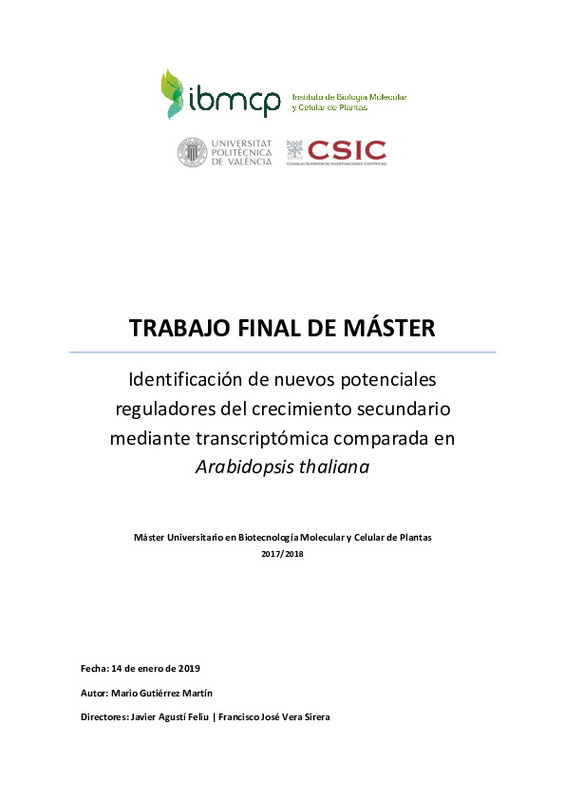JavaScript is disabled for your browser. Some features of this site may not work without it.
Buscar en RiuNet
Listar
Mi cuenta
Estadísticas
Ayuda RiuNet
Admin. UPV
Identificación de nuevos reguladores potenciales del crecimiento secundario mediante transcriptómica comparada en diversos ecotipos de Arabidopsis thaliana
Mostrar el registro completo del ítem
Gutiérrez Martín, M. (2019). Identificación de nuevos reguladores potenciales del crecimiento secundario mediante transcriptómica comparada en diversos ecotipos de Arabidopsis thaliana. http://hdl.handle.net/10251/118824
Por favor, use este identificador para citar o enlazar este ítem: http://hdl.handle.net/10251/118824
Ficheros en el ítem
Metadatos del ítem
| Título: | Identificación de nuevos reguladores potenciales del crecimiento secundario mediante transcriptómica comparada en diversos ecotipos de Arabidopsis thaliana | |||
| Autor: | Gutiérrez Martín, Mario | |||
| Director(es): | ||||
| Entidad UPV: |
|
|||
| Fecha acto/lectura: |
|
|||
| Resumen: |
[ES] El crecimiento secundario es un proceso central en el desarrollo de las plantas que resulta en el engrosamiento de tallos y raíces. Desde un punto de vista biológico, el crecimiento secundario es de gran importancia ...[+]
[EN] Secondary growth is a central process in the development of plants that results in the thickening of stems and roots. From a biological point of view, secondary growth is of great importance because it provides the ...[+]
|
|||
| Palabras clave: |
|
|||
| Derechos de uso: | Reconocimiento - No comercial - Sin obra derivada (by-nc-nd) | |||
| Editorial: |
|
|||
| Titulación: |
|
|||
| Tipo: |
|







